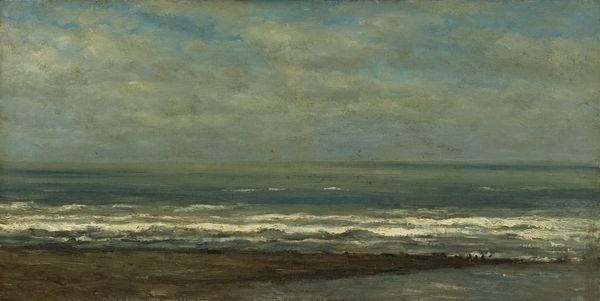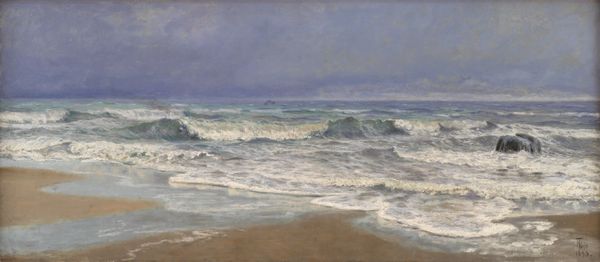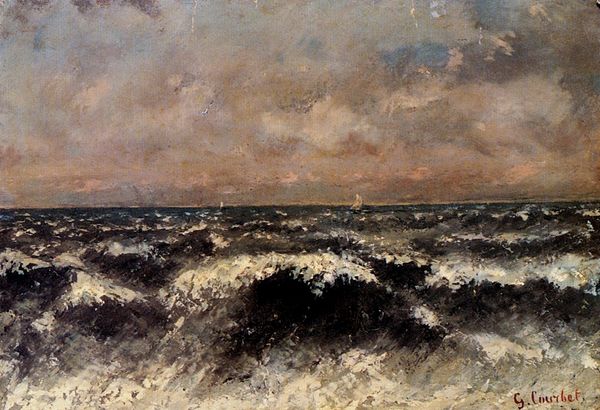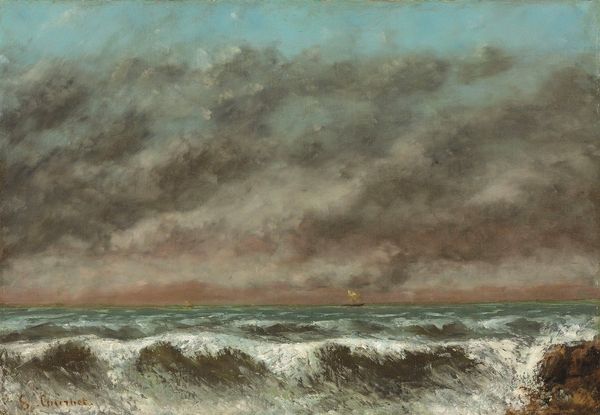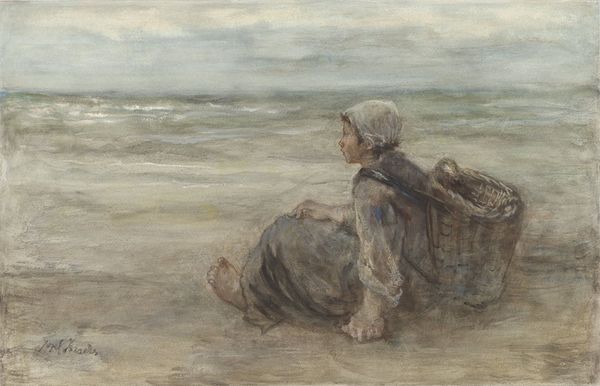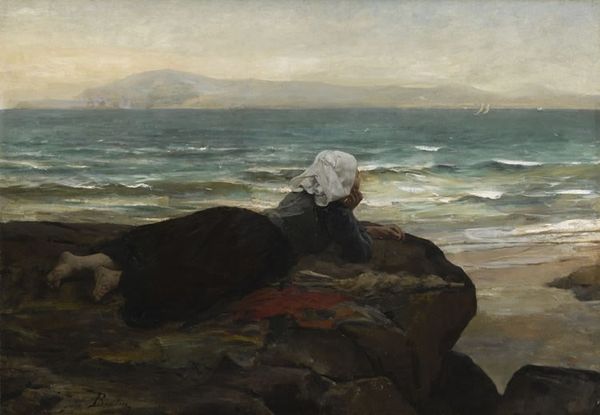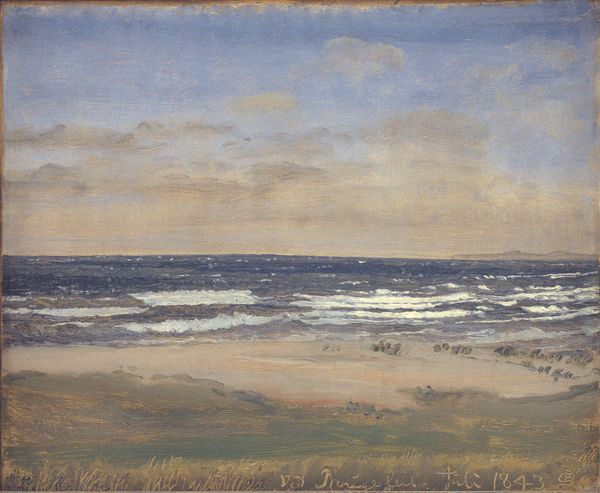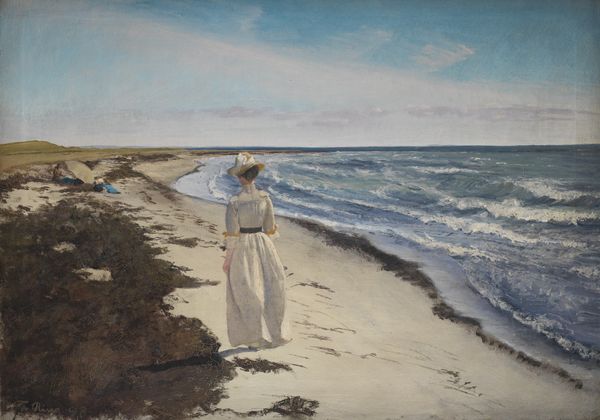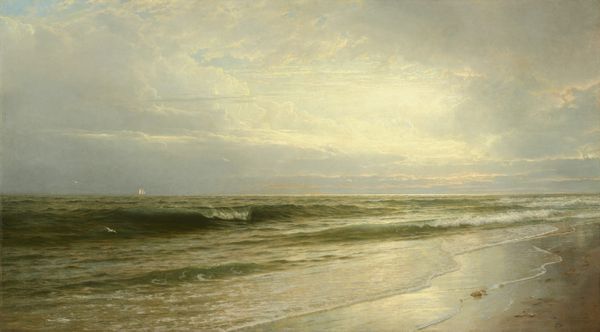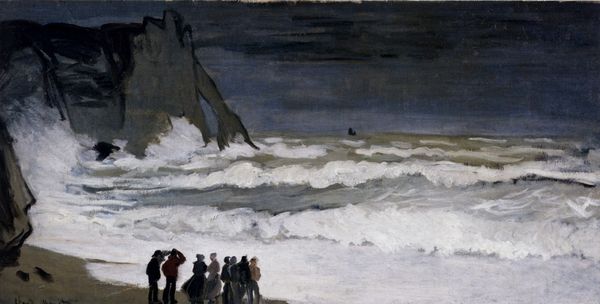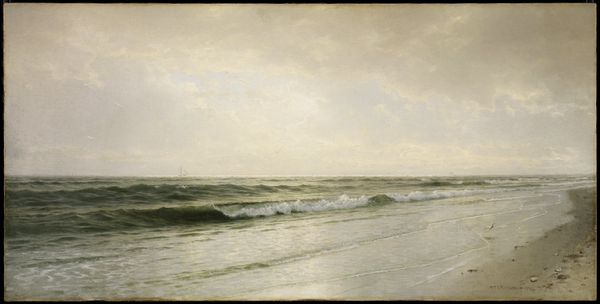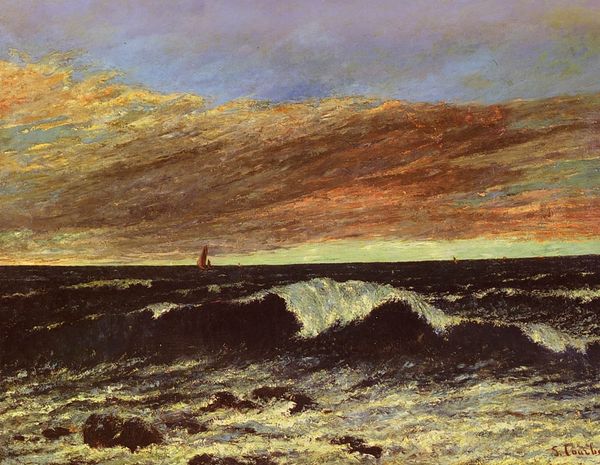
painting, oil-paint
#
painting
#
impressionism
#
oil-paint
#
landscape
#
figuration
#
oil painting
#
romanticism
#
watercolor
#
realism
#
sea
Dimensions: 92 x 73 cm
Copyright: Public domain
Editor: We're now looking at "Looking out to sea," an oil painting, possibly from 1969, by Charles Atamian. The woman’s bright red coat immediately captures the eye against the muted tones of the beach and sea. What historical perspective can you offer on this scene? Curator: Well, beyond its Impressionistic style and subject, which align with a popular taste for landscapes, consider the role such images played in shaping public perceptions of leisure and the coast. Who was this painting meant for, and what social class might have identified with it? Editor: That's a great point. It seems to depict a middle-class woman enjoying a day at the beach. Was there a growing culture of seaside tourism at the time that influenced art like this? Curator: Precisely. Think about the expansion of railways and the rise of seaside resorts in the late 19th and early 20th centuries. Paintings like this idealized that experience, selling a vision of tranquility and escape. And how does the woman’s isolation, standing with her back to us, play into this narrative? Editor: Maybe it emphasizes a personal, almost contemplative experience of nature, away from the bustling crowds that probably did exist at these seaside resorts. The painting almost sanitizes that reality. Curator: Exactly. And Atamian's impressionistic style allows the work to focus on light and atmosphere. It becomes less about depicting the specific reality of the scene and more about evoking a feeling, an emotional response to the sea and the surrounding environment. Editor: It's interesting how seemingly simple images can reflect much larger social trends and desires. I’ll definitely look at paintings of this period differently from now on. Curator: Indeed. It’s not just a pretty picture. It’s a window into how art shapes, and is shaped by, social and cultural forces.
Comments
No comments
Be the first to comment and join the conversation on the ultimate creative platform.
